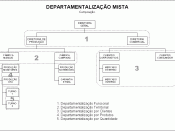Conflict Management Styles
We examine how conflict management styles and content-specific training influence the perception of problems between employees who come into contact from the two organizations. The sample consists of 850 UN military peacekeepers on missions between 1995 and 1999. The results show that avoiding conflict management style has a negative impact while training (managing conflict, ethical dilemmas and coping with stress) has positive impact on the dynamics of inter-organizational contact.
Intro
The interest in this study is to examine the situation of inter-organizational contact where no normative mechanisms for cooperation or coordination exist and conflict is likely to occur. Under these circumstances, the interaction between the boundary spanners becomes the only level at which inter-organizational relationships can be initiated. The objective therefore, is to elucidate the nature of the individual level interactions across organizational boundaries. Past research has shown that when there is no organization-level situation or a strong context which elicits an appropriate behavior from the individual, individuals rely primarily on their own personal characteristics.
The interest is in the management of conflict between the two organizations and facilitation of cooperative exchanges, thus we examine the boundary-spanning individual's conflict management style as a personal characteristic. We further believe that the extent to which the organizations recognize and support boundary-spanning activities in general may affect the employees' interactions and thus, examine the moderating effects of the content-specific training (e.g., intercultural cooperation, managing conflicts, coping with stress, etc.).
Hypothesis
When boundary spanning employees from one organization contact employees from another organization, they experience high exposure to others) and hence, have numerous opportunities for social comparison . Moreover, in the situations of social comparison individuals rely on their primary identification with their own organization and confirm their affiliation by showing ingroup favoritism and outgroup hostility These negative categorization processes...



Very good!!!
Great essay, very well written. Will cite your information on my paper. Thanks.
3 out of 3 people found this comment useful.